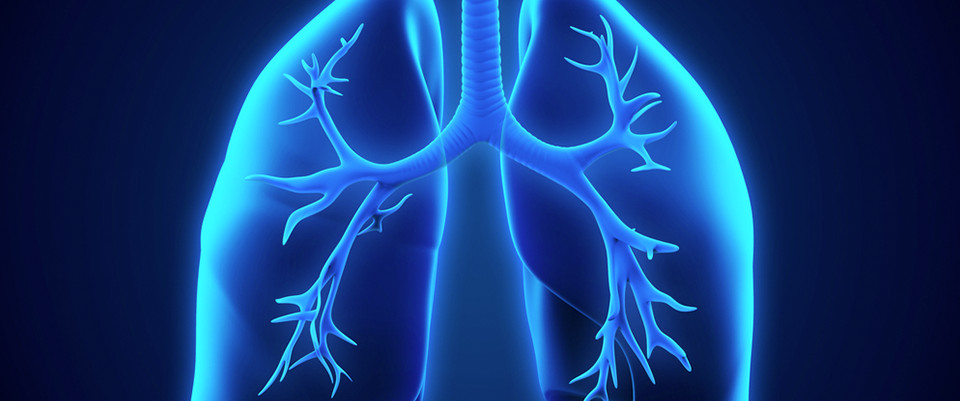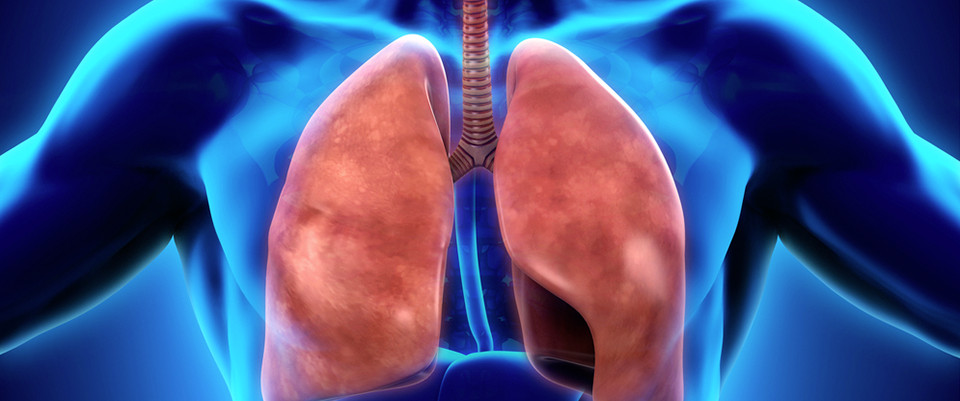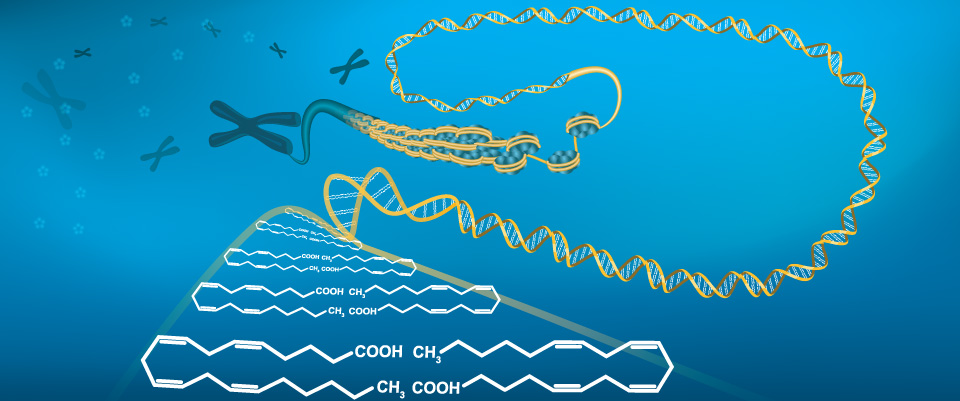PubMed
metabolomics; +21 new citations
21 new pubmed citations were retrieved for your search.
Click on the search hyperlink below to display the complete search results:
metabolomics
These pubmed results were generated on 2015/07/03PubMed comprises more than 24 million citations for biomedical literature from MEDLINE, life science journals, and online books.
Citations may include links to full-text content from PubMed Central and publisher web sites.
Phage Phenomics: Physiological Approaches to Characterize Novel Viral Proteins.
Phage Phenomics: Physiological Approaches to Characterize Novel Viral Proteins.
J Vis Exp. 2015;(100)
Authors: Sanchez SE, Cuevas DA, Rostron JE, Liang TY, Pivaroff CG, Haynes MR, Nulton J, Felts B, Bailey BA, Salamon P, Edwards RA, Burgin AB, Segall AM, Rohwer F
Abstract
Current investigations into phage-host interactions are dependent on extrapolating knowledge from (meta)genomes. Interestingly, 60 - 95% of all phage sequences share no homology to current annotated proteins. As a result, a large proportion of phage genes are annotated as hypothetical. This reality heavily affects the annotation of both structural and auxiliary metabolic genes. Here we present phenomic methods designed to capture the physiological response(s) of a selected host during expression of one of these unknown phage genes. Multi-phenotype Assay Plates (MAPs) are used to monitor the diversity of host substrate utilization and subsequent biomass formation, while metabolomics provides bi-product analysis by monitoring metabolite abundance and diversity. Both tools are used simultaneously to provide a phenotypic profile associated with expression of a single putative phage open reading frame (ORF). Representative results for both methods are compared, highlighting the phenotypic profile differences of a host carrying either putative structural or metabolic phage genes. In addition, the visualization techniques and high throughput computational pipelines that facilitated experimental analysis are presented.
PMID: 26132888 [PubMed - as supplied by publisher]
Personalized medicine in idiopathic pulmonary fibrosis: facts and promises.
Personalized medicine in idiopathic pulmonary fibrosis: facts and promises.
Curr Opin Pulm Med. 2015 Jun 30;
Authors: Spagnolo P, Tzouvelekis A, Maher TM
Abstract
PURPOSE OF REVIEW: In this article, we summarize and discuss the most recent literature on personalized medicine in idiopathic pulmonary fibrosis (IPF), a chronic progressive and almost invariably lethal disease of unknown cause. This review is timely as major advances in our understanding of disease pathobiology and improvements in molecular techniques have recently led to the identification of potential surrogates of diagnosis, prognosis and response to treatment.
RECENT FINDINGS: The most promising and advanced candidate biomarkers are presented based on their proposed mechanistic pathways (e.g. alveolar epithelial cell dysfunction, immune dysregulation, microbiome, extracellular matrix remodeling and fibroproliferation, epigenetic markers and metabolomics). Recent data suggest that components of the immune system may contribute to the development of IPF. A potential role for infections as a cofactor in disease development and progression or as a trigger in disease exacerbation has also recently been proposed.
SUMMARY: Clinical management of IPF is unsatisfactory because of limited availability of truly effective therapies, lack of accurate predictors of disease behavior and absence of simple short-term measures of therapeutic response. A number of putative biomarkers have been identified in patients with IPF, although none has been validated to the standard necessary for their use in either therapeutic trials or clinical practice. Currently, ongoing prospective longitudinal studies will hopefully permit such validation.
PMID: 26132817 [PubMed - as supplied by publisher]
Conferring high-temperature tolerance to nontransgenic tomato scions using graft transmission of RNA silencing of the fatty acid desaturase gene.
Conferring high-temperature tolerance to nontransgenic tomato scions using graft transmission of RNA silencing of the fatty acid desaturase gene.
Plant Biotechnol J. 2015 Jul 1;
Authors: Nakamura S, Hondo K, Kawara T, Okazaki Y, Saito K, Kobayashi K, Yaeno T, Yamaoka N, Nishiguchi M
Abstract
We investigated graft transmission of high-temperature tolerance in tomato scions to nontransgenic scions from transgenic rootstocks, where the fatty acid desaturase gene (LeFAD7) was RNA-silenced. Tomato was transformed with a plasmid carrying an inverted repeat of LeFAD7 by Agrobacterium. Several transgenic lines showed the lower amounts of LeFAD7 RNA and unsaturated fatty acids, while nontransgenic control did not, and siRNA was detected in the transgenic lines, but not in control. These lines grew under conditions of high temperature, while nontransgenic control did not. Further, the nontransgenic plants were grafted onto the silenced transgenic plants. The scions showed less of the target gene RNA, and siRNA was detected. Under high-temperature conditions, these grafted plants grew, while control grafted plants did not. Thus, it was shown that high-temperature tolerance was conferred in the nontransgenic scions after grafting onto the silenced rootstocks.
PMID: 26132723 [PubMed - as supplied by publisher]
Integrating transcriptomic and metabolomic analysis to understand natural leaf senescence in sunflower.
Integrating transcriptomic and metabolomic analysis to understand natural leaf senescence in sunflower.
Plant Biotechnol J. 2015 Jul 1;
Authors: Moschen S, Bengoa Luoni S, Di Rienzo JA, Caro MD, Tohge T, Watanabe M, Hollmann J, González S, Rivarola M, García-García F, Dopazo J, Hopp HE, Hoefgen R, Fernie AR, Paniego N, Fernández P, Heinz RA
Abstract
Leaf senescence is a complex process, which has dramatic consequences on crop yield. In sunflower, gap between potential and actual yields reveals the economic impact of senescence. Indeed, sunflower plants are incapable of maintaining their green leaf area over sustained periods. This study characterizes the leaf senescence process in sunflower through a systems biology approach integrating transcriptomic and metabolomic analyses: plants being grown under both glasshouse and field conditions. Our results revealed a correspondence between profile changes detected at the molecular, biochemical and physiological level throughout the progression of leaf senescence measured at different plant developmental stages. Early metabolic changes were detected prior to anthesis and before the onset of the first senescence symptoms, with more pronounced changes observed when physiological and molecular variables were assessed under field conditions. During leaf development, photosynthetic activity and cell growth processes decreased, whereas sucrose, fatty acid, nucleotide and amino acid metabolisms increased. Pathways related to nutrient recycling processes were also up-regulated. Members of the NAC, AP2-EREBP, HB, bZIP and MYB transcription factor families showed high expression levels, and their expression level was highly correlated, suggesting their involvement in sunflower senescence. The results of this study thus contribute to the elucidation of the molecular mechanisms involved in the onset and progression of leaf senescence in sunflower leaves as well as to the identification of candidate genes involved in this process.
PMID: 26132509 [PubMed - as supplied by publisher]
Proteome analysis in thyroid pathology.
Proteome analysis in thyroid pathology.
Expert Rev Proteomics. 2015 Jul 1;:1-16
Authors: Pagni F, L'Imperio V, Bono F, Garancini M, Roversi G, De Sio G, Galli M, Smith AJ, Chinello C, Magni F
Abstract
The incidence of thyroid cancer has continuously increased due to its detection in the preclinical stage. Clinical research in thyroid pathology is focusing on the development of new diagnostic tools to improve the stratification of nodules that have biological, practical and economic consequences on the management of patients. Several clinical questions related to thyroid carcinoma remain open and the use of proteomic research in the hunt for new targets with potential diagnostic applications has an important role in the solutions. Many different proteomic approaches are used to investigate thyroid lesions, including mass spectrometry profiling and imaging technologies. These approaches have been applied to different human tissues (cytological specimens, frozen sections, formalin-fixed paraffin embedded tissue or Tissue Micro Arrays). Moreover, other specimens are used for biomarker discovery, such as cell lines and the secretome. Alternative approaches, such as metabolomics and lipidomics, are also used and integrated within proteomics.
PMID: 26132359 [PubMed - as supplied by publisher]
Effects of Olive Metabolites on DNA Cleavage Mediated by Human Type II Topoisomerases.
Effects of Olive Metabolites on DNA Cleavage Mediated by Human Type II Topoisomerases.
Biochemistry. 2015 Jul 1;
Authors: Vann KR, Sedgeman CA, Gopas J, Golan-Goldhirsh A, Osheroff N
Abstract
Several naturally occurring dietary polyphenols with chemopreventive or anticancer properties are topoisomerase II poisons. In order to identify additional phytochemicals that enhance topoisomerase II-mediated DNA cleavage, a library of 341 Mediterranean plant extracts was screened for activity against human topoisomerase IIα. An extract from Phillyrea latifolia L., a member of the olive tree family, displayed high activity against the human enzyme. Based on previous metabolomics studies, we identified several polyphenols (hydroxytyrosol, oleuropein, verbascoside, tyrosol, and caffeic acid) as potential candidates for topoisomerase II poisons. Of these, hydroxytyrosol, oleuropein, and verbascoside enhanced topoisomerase II-mediated DNA cleavage. The potency of these olive metabolites increased 10- to 100-fold in the presence of an oxidant. Hydroxytyrosol, oleuropein, and verbascoside displayed hallmark characteristics of covalent topoisomerase II poisons: 1) the activity of the metabolites was abrogated by a reducing agent, 2) compounds inhibited topoisomerase II activity when incubated with the enzyme prior to the addition of DNA, and 3) compounds were unable to poison a topoisomerase IIα construct that lacked the N-terminal domain. Because hydroxytyrosol, oleuropein, and verbascoside are broadly distributed across the olive family, extracts from the leaves, bark, and fruit of 11 olive tree species were tested for activity against human topoisomerase IIα. Several of the extracts enhanced enzyme-mediated DNA cleavage. Finally, a commercial olive leaf supplement and extra virgin olive oils pressed from a variety of Olea europea subspecies enhanced DNA cleavage mediated by topoisomerase IIα. Thus, olive metabolites appear to act as topoisomerase II poisons in complex formulations intended for human dietary consumption.
PMID: 26132160 [PubMed - as supplied by publisher]
A statistical framework to model the meeting-in-the-middle principle using metabolomic data: application to hepatocellular carcinoma in the EPIC study.
Related Articles
A statistical framework to model the meeting-in-the-middle principle using metabolomic data: application to hepatocellular carcinoma in the EPIC study.
Mutagenesis. 2015 Jun 30;
Authors: Assi N, Fages A, Vineis P, Chadeau-Hyam M, Stepien M, Duarte-Salles T, Byrnes G, Boumaza H, Knüppel S, Kühn T, Palli D, Bamia C, Boshuizen H, Bonet C, Overvad K, Johansson M, Travis R, Gunter MJ, Lund E, Dossus L, Elena-Herrmann B, Riboli E, Jenab M, Viallon V, Ferrari P
Abstract
Metabolomics is a potentially powerful tool for identification of biomarkers associated with lifestyle exposures and risk of various diseases. This is the rationale of the 'meeting-in-the-middle' concept, for which an analytical framework was developed in this study. In a nested case-control study on hepatocellular carcinoma (HCC) within the European Prospective Investigation into Cancer and nutrition (EPIC), serum (1)H nuclear magnetic resonance (NMR) spectra (800 MHz) were acquired for 114 cases and 222 matched controls. Through partial least square (PLS) analysis, 21 lifestyle variables (the 'predictors', including information on diet, anthropometry and clinical characteristics) were linked to a set of 285 metabolic variables (the 'responses'). The three resulting scores were related to HCC risk by means of conditional logistic regressions. The first PLS factor was not associated with HCC risk. The second PLS metabolomic factor was positively associated with tyrosine and glucose, and was related to a significantly increased HCC risk with OR = 1.11 (95% CI: 1.02, 1.22, P = 0.02) for a 1SD change in the responses score, and a similar association was found for the corresponding lifestyle component of the factor. The third PLS lifestyle factor was associated with lifetime alcohol consumption, hepatitis and smoking, and had negative loadings on vegetables intake. Its metabolomic counterpart displayed positive loadings on ethanol, glutamate and phenylalanine. These factors were positively and statistically significantly associated with HCC risk, with 1.37 (1.05, 1.79, P = 0.02) and 1.22 (1.04, 1.44, P = 0.01), respectively. Evidence of mediation was found in both the second and third PLS factors, where the metabolomic signals mediated the relation between the lifestyle component and HCC outcome. This study devised a way to bridge lifestyle variables to HCC risk through NMR metabolomics data. This implementation of the 'meeting-in-the-middle' approach finds natural applications in settings characterised by high-dimensional data, increasingly frequent in the omics generation.
PMID: 26130468 [PubMed - as supplied by publisher]
Distinct metabolomic profiles of papillary thyroid carcinoma and benign thyroid adenoma.
Related Articles
Distinct metabolomic profiles of papillary thyroid carcinoma and benign thyroid adenoma.
J Proteome Res. 2015 Jul 1;
Authors: Xu Y, Zheng X, Qiu Y, Jia W, Wang J, Yin S
Abstract
Papillary thyroid carcinoma (PTC) and benign thyroid adenoma (BTA) are the most common head and neck tumors. However, the metabolic differences between PTC and BTA have not been characterized. The aim of this study was to identify the metabolic profiles of these two types of tumors using a metabolomics approach. Tumors and adjacent non-tumor specimens collected from 57 patients with PTC and 48 patients with BTA were profiled using gas chromatography-time-of-flight mass spectrometry and ultra-performance liquid chromatography-quadrupole time-of-flight mass spectrometry. A panel of 46 and 44 differentially expressed metabolites were identified in the PTC and BTA specimens, respetively, and compared with non-tumor tissues. Common metabolic signatures, as characterized by increased glycolysis, amino acid metabolism, one carbon metabolism and tryptophan metabolism, were found in both types of tumors. Purine and pyrimidine metabolism was significantly elevated in the PTC specimens, and taurine and hypotaurine levels were also higher in the PTC tissues. Increased fatty acid and bile acid levels were found, especially in the BTA tissues. The metabolic profiles of the PTC and BTA tissues include both similar and remarkably different metabolites, suggesting the presence of common and unique mechanistic pathways in these types of tumors during tumorigenesis.
PMID: 26130307 [PubMed - as supplied by publisher]
Metabolic Responses in Candida tropicalis to Complex Inhibitors During Xylitol Bioconversion.
Related Articles
Metabolic Responses in Candida tropicalis to Complex Inhibitors During Xylitol Bioconversion.
Fungal Genet Biol. 2015 Jun 27;
Authors: Wang S, Li H, Fan X, Zhang J, Tang P, Yuan Q
Abstract
During xylitol fermentation, Candida tropicalis is often inhibited by inhibitors in hemicellulose hydrolysate. The mechanisms involved in the metabolic responses to inhibitor stress and the resistances to inhibitors are still not clear. To understand the inhibition mechanisms and the metabolic responses to inhibitors, a GC/MS-based metabolomics approach was performed on C. tropicalis treated with and without complex inhibitors (CI, including furfural, phenol and acetic acid). Partial least squares discriminant analysis was used to determine the metabolic variability between CI-treated groups and control groups, and 25 metabolites were identified as possible entities responsible for the discrimination caused by inhibitors. We found that xylose uptake rate and xylitol oxidation rate were promoted by CI treatment. Metabolomics analysis showed that the flux from xylulose to pentose phosphate pathway increased, and tricarboxylic acid cycle was disturbed by CI. Moreover, the changes in levels of 1, 3-propanediol, trehalose, saturated fatty acids and amino acids showed different mechanisms involved in metabolic responses to inhibitor stress. The increase of 1, 3-propanediol was considered to be correlated with regulating redox balance and osmoregulation. The increase of trehalose might play a role in protein stabilization and cellular membranes protection. Saturated fatty acids could cause the decrease of membrane fluidity and make the plasma membrane rigid to maintain the integrity of plasma membrane. The deeper understanding of the inhibition mechanisms and the metabolic responses to inhibitors will provide us with more information on the metabolism regulation during xylitol bioconversion and the construction of industrial strains with inhibitor tolerance for better utilization of bioresource.
PMID: 26127015 [PubMed - as supplied by publisher]
Metabolic study of enrofloxacin and metabolic profile modifications in broiler chicken tissues after drug administration.
Related Articles
Metabolic study of enrofloxacin and metabolic profile modifications in broiler chicken tissues after drug administration.
Food Chem. 2015 Apr 1;172:30-9
Authors: Morales-Gutiérrez FJ, Barbosa J, Barrón D
Abstract
In this work, the identification and distribution of the metabolites from enrofloxacin (ENR) in liver, kidney and muscle tissues from broiler chickens subjected to a pharmacological treatment was studied. In addition, qualitative analyses of changes in the metabolic profile in those tissues after drug administration were also investigated. As a result, a total of 31 different metabolites from ENR were identified, which ciprofloxacin (CIP) and desethylene-ENR were the major metabolites. After four days of withdrawal period, most of the metabolites were excreted, but residues of ENR and CIP still persisted in tissues at a concentration under the permitted maximum residue limit (MRL). Non-medicated, medicated and post-treatment samples of chicken tissues were clearly clustered according to their metabolite profile by principal component analysis and partial least squares discriminant analysis, which indicates that endogenous metabolites have not returned to their original levels after the withdrawal period. A total of 22 relevant mass features contributing to this separation as potential markers of chicken samples were tentatively identified.
PMID: 25442520 [PubMed - indexed for MEDLINE]
Lipidomics applications for discovering biomarkers of diseases in clinical chemistry.
Related Articles
Lipidomics applications for discovering biomarkers of diseases in clinical chemistry.
Int Rev Cell Mol Biol. 2014;313:1-26
Authors: Zhao YY, Cheng XL, Lin RC
Abstract
Lipids are the fundamental components of biological membranes as well as the metabolites of organisms. Lipids play diverse and important roles in biologicals. The lipid imbalance is closely associated with numerous human lifestyle-related diseases, such as atherosclerosis, obesity, diabetes, and Alzheimer's disease. Lipidomics or lipid profiling is a system-based study of all lipids aiming at comprehensive analysis of lipids in the biological system. Lipidomics has been accepted as a lipid-related research tool in lipid biochemistry, clinical biomarker discovery, disease diagnosis, and in understanding disease pathology. Lipidomics will not only provide insights into the specific functions of lipid species in health and disease, but will also identify potential biomarkers for establishing preventive or therapeutic programs for human diseases. This review presents an overview of lipidomics followed by in-depth discussion of its application to the study of human diseases, including extraction methods of lipids, analytical technologies, data analysis, and clinical research in cancer, neuropsychiatric disease, cardiovascular disease, kidney disease, and respiratory disease. We describe the current status of the identification of metabolic biomarkers in different diseases. We also discuss the lipidomics for the future perspectives and their potential problems. The application of lipidomics in clinical studies may provide new insights into lipid profiling and pathophysiological mechanisms.
PMID: 25376488 [PubMed - indexed for MEDLINE]
Disposition and metabolic profiling of [(14)C]cerlapirdine using accelerator mass spectrometry.
Related Articles
Disposition and metabolic profiling of [(14)C]cerlapirdine using accelerator mass spectrometry.
Drug Metab Dispos. 2014 Dec;42(12):2023-32
Authors: Tse S, Leung L, Raje S, Seymour M, Shishikura Y, Obach RS
Abstract
Cerlapirdine (SAM-531, PF-05212365) is a selective, potent, full antagonist of the 5-hydroxytryptamine 6 (5-HT6) receptor. Cerlapirdine and other 5-HT6 receptor antagonists have been in clinical development for the symptomatic treatment of Alzheimer's disease. A human absorption, distribution, metabolism, and excretion study was conducted to gain further understanding of the metabolism and disposition of cerlapirdine. Because of the low amount of radioactivity administered, total (14)C content and metabolic profiles in plasma, urine, and feces were determined using accelerator mass spectrometry (AMS). After a single, oral 5-mg dose of [(14)C]cerlapirdine (177 nCi), recovery of total (14)C was almost complete, with feces being the major route of elimination of the administered dose, whereas urinary excretion played a lesser role. The extent of absorption was estimated to be at least 70%. Metabolite profiling in pooled plasma samples showed that unchanged cerlapirdine was the major drug-related component in circulation, representing 51% of total (14)C exposure in plasma. One metabolite (M1, desmethylcerlapirdine) was detected in plasma, and represented 9% of the total (14)C exposure. In vitro cytochrome P450 reaction phenotyping studies showed that M1 was formed primarily by CYP2C8 and CYP3A4. In pooled urine samples, three major drug-related peaks were detected, corresponding to cerlapirdine-N-oxide (M3), cerlapirdine, and desmethylcerlapirdine. In feces, cerlapirdine was the major (14)C component excreted, followed by desmethylcerlapirdine. The results of this study demonstrate that the use of the AMS technique enables comprehensive quantitative elucidation of the disposition and metabolic profiles of compounds administered at a low radioactive dose.
PMID: 25217486 [PubMed - indexed for MEDLINE]
MetabNet: An R Package for Metabolic Association Analysis of High-Resolution Metabolomics Data.
Related Articles
MetabNet: An R Package for Metabolic Association Analysis of High-Resolution Metabolomics Data.
Front Bioeng Biotechnol. 2015;3:87
Authors: Uppal K, Soltow QA, Promislow DE, Wachtman LM, Quyyumi AA, Jones DP
Abstract
Liquid-chromatography high-resolution mass spectrometry provides capability to measure >40,000 ions derived from metabolites in biologic samples. This presents challenges to confirm identities of known chemicals and delineate potential metabolic pathway associations of unidentified chemicals. We provide an R package for metabolic network analysis, MetabNet, to perform targeted metabolome-wide association study of specific metabolites to facilitate detection of their related metabolic pathways and network structures.
PMID: 26125020 [PubMed]
Chronic inflammation: is it the driver or is it paving the road for malignant transformation?
Related Articles
Chronic inflammation: is it the driver or is it paving the road for malignant transformation?
Genes Cancer. 2015 May;6(5-6):214-9
Authors: Afrasiabi K, Zhou YH, Fleischman A
Abstract
Chronic inflammation in well-defined mouse models such as Giα2 knock out mouse has been shown to trigger formation and expansion of hypoxic niches and also leads to up regulation of NFĸB, offering cells which have adapted their genetic machinery to hypoxia a unique survival advantage. These adapted cells have been shown to acquire stem cell-like capabilities as shown by up regulation of stem cell markers. Such long lived cells become permanent residents in sub mucosa and acquire a malignant phenotype from long-term exposure to noxious environmental agents due to a barrier defect secondary to down regulation of barrier proteins such as Zo1 and Occludin. Indeed mitotic spindle disorientation in such mice has been proposed as another contributory factor to malignant transformation. Sterilization of bowel lumen of these mice through different techniques has prevented malignant transformation in the presence of chronic inflammation. These facts stand strongly against chronic inflammation as a true driver of carcinogenesis but clearly support its role in facilitating the emergence of the neoplastic clone.
PMID: 26124920 [PubMed]
The therapy of gefitinib towards breast cancer partially through reversing breast cancer biomarker arginine.
Related Articles
The therapy of gefitinib towards breast cancer partially through reversing breast cancer biomarker arginine.
Afr Health Sci. 2015 Jun;15(2):594-7
Authors: Geng D, Sun D, Zhang L, Zhang W
Abstract
BACKGROUND: Breast cancer remains the leading reason of cancer death among women worldwide, and gefitinib is the efficient drug for breast cancer.
AIMS: To use targeted metabolomics method to elucidate the therapeutic mechanism of gefitinib through profiling the amino acids.
METHODS: Healthy women (n=56) and women with breast cancer (n=60) were enrolled in Affiliated Yuhuangding hospital, medical college of Qingdao University from 2012-2014. API 3200 triple quadrupole mass spectrometer was used to analyze the serum samples.
RESULTS: The concentration of amino acids was compared between healthy women and women with breast cancers. Compared with the healthy women, the concentration of arginine in breast cancer women significantly decreased (p<0.0001). To show the representative capability of arginine towards the pathogenesis of breast cancers, the receiver operating characteristic (ROC) curve was drawn, and the area under the curve (AUC) was calculated to be 0.96 ± 0.02, indicating the high predictive capability of arginine for breast cancer . The reversing ability of gefitinib towards the level of arginine was further determined, and 1 month treatment of gefitinib (500 mg/day) significantly reversed the arginine level of breast cancer patients (p<0.0001).
CONCLUSION: The therapy of gefitinib towards breast cancer through reversing breast cancer biomarker arginine was demonstrated.
PMID: 26124808 [PubMed - in process]
Educating future nursing scientists: Recommendations for integrating omics content in PhD programs.
Related Articles
Educating future nursing scientists: Recommendations for integrating omics content in PhD programs.
Nurs Outlook. 2015 Jun 12;
Authors: Conley YP, Heitkemper M, McCarthy D, Anderson CM, Corwin EJ, Daack-Hirsch S, Dorsey SG, Gregory KE, Groer MW, Henly SJ, Landers T, Lyon DE, Taylor JY, Voss J
Abstract
Preparing the next generation of nursing scientists to conduct high-impact, competitive, sustainable, innovative, and interdisciplinary programs of research requires that the curricula for PhD programs keep pace with emerging areas of knowledge and health care/biomedical science. A field of inquiry that holds great potential to influence our understanding of the underlying biology and mechanisms of health and disease is omics. For the purpose of this article, omics refers to genomics, transcriptomics, proteomics, epigenomics, exposomics, microbiomics, and metabolomics. Traditionally, most PhD programs in schools of nursing do not incorporate this content into their core curricula. As part of the Council for the Advancement of Nursing Science's Idea Festival for Nursing Science Education, a work group charged with addressing omics preparation for the next generation of nursing scientists was convened. The purpose of this article is to describe key findings and recommendations from the work group that unanimously and enthusiastically support the incorporation of omics content into the curricula of PhD programs in nursing. The work group also calls to action faculty in schools of nursing to develop strategies to enable students needing immersion in omics science and methods to execute their research goals.
PMID: 26123776 [PubMed - as supplied by publisher]
Computational analysis and ratiometric comparison approaches aimed to assist column selection in hydrophilic interaction liquid chromatography-tandem mass spectrometry targeted metabolomics.
Related Articles
Computational analysis and ratiometric comparison approaches aimed to assist column selection in hydrophilic interaction liquid chromatography-tandem mass spectrometry targeted metabolomics.
J Chromatogr A. 2015 Jun 14;
Authors: Sampsonidis I, Witting M, Koch W, Virgiliou C, Gika HG, Schmitt-Kopplin P, Theodoridis GA
Abstract
In the present work two different approaches, a semi-quantitative and a Derringer function approach, were developed to assist column selection for method development in targeted metabolomics. These approaches were applied in the performance assessment of three HILIC columns with different chemistries (an amide, a diol and a zwitterionic phase). This was the first step for the development of a HILIC UPLC-MS/MS method that should be capable to analyze a large number of polar metabolites. Two gradient elution profiles and two mobile phase pH values were tested for the analysis of multi-analyte mixtures. Acquired chromatographic data were firstly treated by a ratiometric, "semi-quantitative" approach which quantifies various overall analysis parameters (e.g. the percent of detected compounds, retentivity and resolved critical pairs). These parameters were used to assess chromatographic performance in a rather conventional/traditional and cumbersome/labor-intensive way. Secondly, a comprehensive and automated comparison of the three columns was performed by monitoring several well-known chromatographic parameters (peak width, resolution, tailing factor, etc.) using a lab-built programming script which calculates overall desirability utilizing Derringer functions. Derringer functions exhibit the advantage that column performance is ultimately expressed in an objective single and quantitative value which can be easily interpreted. In summary, results show that each column exhibits unique strengths in metabolic profiling of polar compounds. The applied methodology proved useful for the selection of the most effective chromatographic system during method development for LC-MS/MS targeted metabolomics, while it could further assist in the selection of chromatographic conditions for the development of multi-analyte methods.
PMID: 26122858 [PubMed - as supplied by publisher]
Isoprene emission by poplar is not important for the feeding behaviour of poplar leaf beetles.
Related Articles
Isoprene emission by poplar is not important for the feeding behaviour of poplar leaf beetles.
BMC Plant Biol. 2015;15:165
Authors: Müller A, Kaling M, Faubert P, Gort G, Smid HM, Van Loon JJ, Dicke M, Kanawati B, Schmitt-Kopplin P, Polle A, Schnitzler JP, Rosenkranz M
Abstract
BACKGROUND: Chrysomela populi (poplar leaf beetle) is a common herbivore in poplar plantations whose infestation causes major economic losses. Because plant volatiles act as infochemicals, we tested whether isoprene, the main volatile organic compound (VOC) produced by poplars (Populus x canescens), affects the performance of C. populi employing isoprene emitting (IE) and transgenic isoprene non-emitting (NE) plants. Our hypothesis was that isoprene is sensed and affects beetle orientation or that the lack of isoprene affects plant VOC profiles and metabolome with consequences for C. populi feeding.
RESULTS: Electroantennographic analysis revealed that C. populi can detect higher terpenes, but not isoprene. In accordance to the inability to detect isoprene, C. populi showed no clear preference for IE or NE poplar genotypes in the choice experiments, however, the beetles consumed a little bit less leaf mass and laid fewer eggs on NE poplar trees in field experiments. Slight differences in the profiles of volatile terpenoids between IE and NE genotypes were detected by gas chromatography - mass spectrometry. Non-targeted metabolomics analysis by Fourier Transform Ion Cyclotron Resonance Mass Spectrometer revealed genotype-, time- and herbivore feeding-dependent metabolic changes both in the infested and adjacent undamaged leaves under field conditions.
CONCLUSIONS: We show for the first time that C. populi is unable to sense isoprene. The detected minor differences in insect feeding in choice experiments and field bioassays may be related to the revealed changes in leaf volatile emission and metabolite composition between the IE and NE poplars. Overall our results indicate that lacking isoprene emission is of minor importance for C. populi herbivory under natural conditions, and that the lack of isoprene is not expected to change the economic losses in poplar plantations caused by C. populi infestation.
PMID: 26122266 [PubMed - in process]
The current epidemiology and clinical decisions surrounding acute respiratory infections.
Related Articles
The current epidemiology and clinical decisions surrounding acute respiratory infections.
Trends Mol Med. 2014 Oct;20(10):579-88
Authors: Zaas AK, Garner BH, Tsalik EL, Burke T, Woods CW, Ginsburg GS
Abstract
Acute respiratory infection (ARI) is a common diagnosis in outpatient and emergent care settings. Currently available diagnostics are limited, creating uncertainty in the use of antibacterial, antiviral, or supportive care. Up to 72% of ambulatory care patients with ARI are treated with an antibacterial, despite only a small fraction actually needing one. Antibiotic overuse is not restricted to ambulatory care: ARI accounts for approximately 5 million emergency department (ED) visits annually in the USA, where 52-61% of such patients receive antibiotics. Thus, an accurate test for the presence or absence of viral or bacterial infection is needed. In this review, we focus on recent research showing that the host-response (genomic, proteomic, or miRNA) can accomplish this task.
PMID: 25201713 [PubMed - indexed for MEDLINE]











